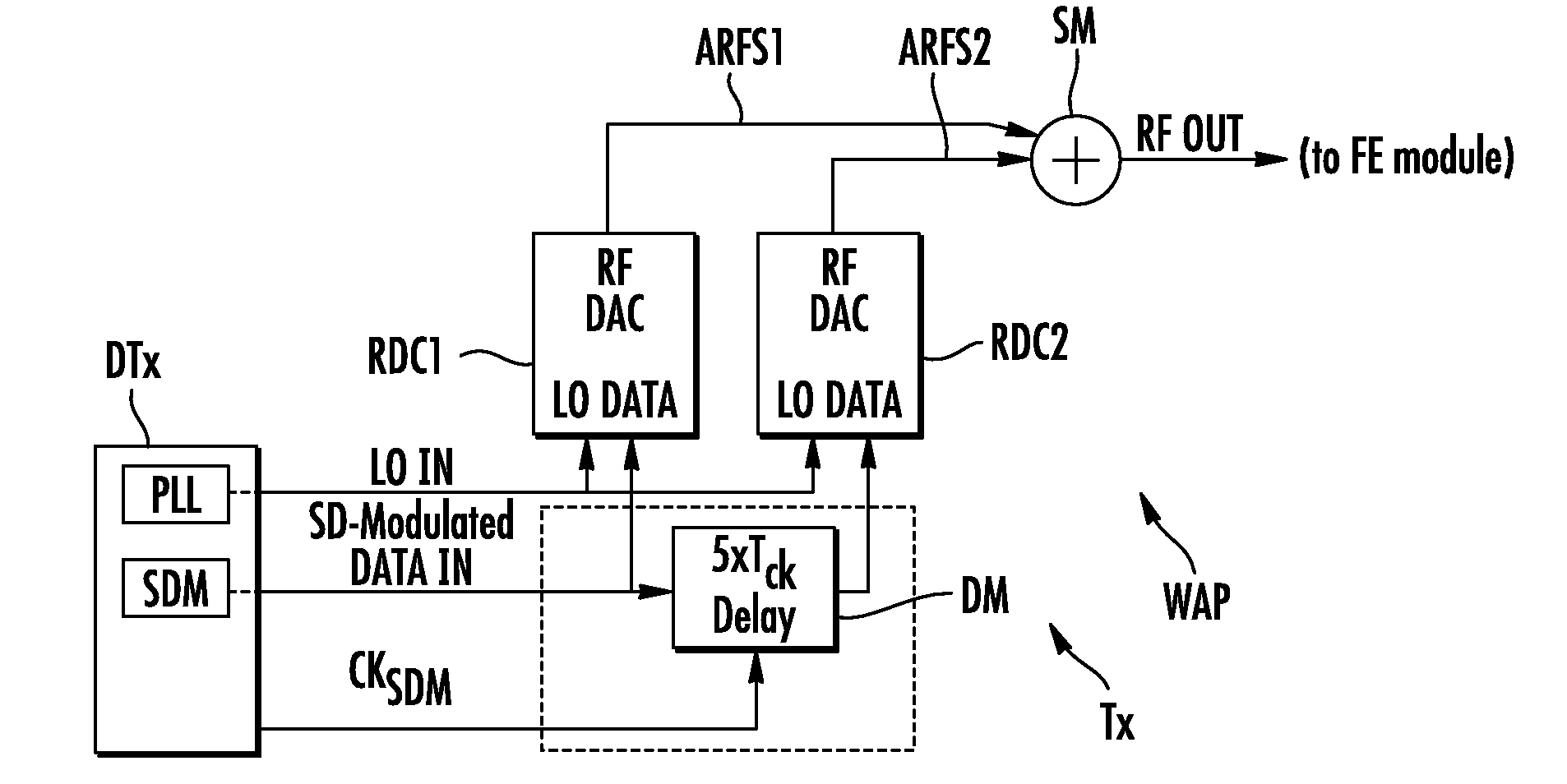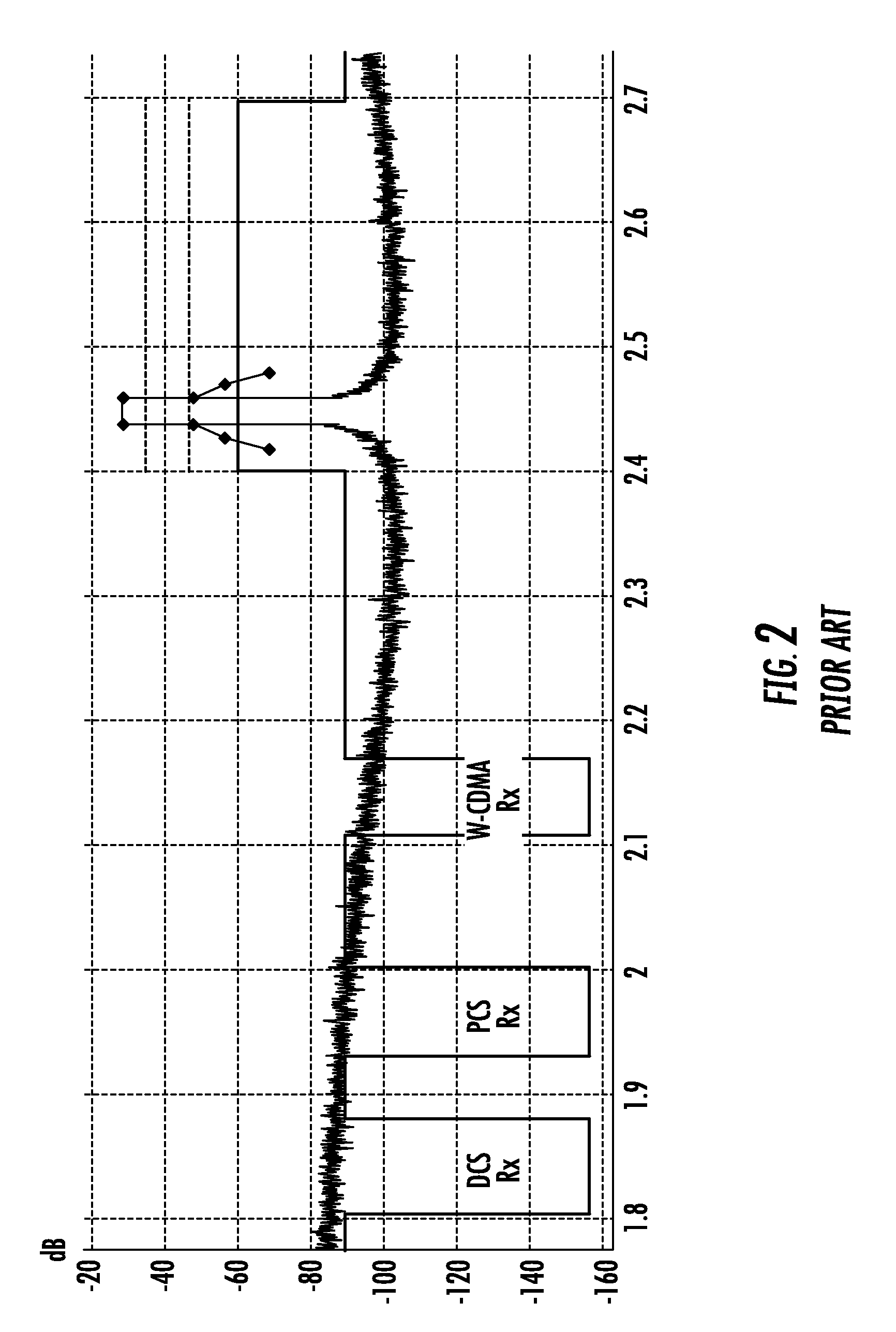Method for notch filtering a digital signal, and corresponding electronic device
a digital signal and filtering technology, applied in the field of digital signal processing, can solve the problems of high-order modulator, noise pollution of cellular receive bands, and clock frequency limitation, and achieve the effect of reducing quantization nois
- Summary
- Abstract
- Description
- Claims
- Application Information
AI Technical Summary
Benefits of technology
Problems solved by technology
Method used
Image
Examples
Embodiment Construction
[0029]FIG. 1 illustrates an example of a conventional transmission chain of a wireless apparatus WAP, such as a mobile phone. The transmission chain comprises a digital stage DTX connected through a single radiofrequency digital to analog converter RDC, to an analog front end stage FE. The front end stage FE is connected to an antenna ANT.
[0030]The digital stage DTX comprises low and high frequency digital logic, whose task is to change the sampling rate of the base-band (BB) signal delivered by a base-band processor, from Ffft (Base-Band Sampling Frequency, in the range of a few MHz) to Fc (Fcarrier) or a multiple of Fc, in the range of a few hundred MHz to a few GHz. This upsampled signal is then processed by a sigma-delta modulator (SDM) in order to represent the high resolution base-band signal using a reduced number of bits.
[0031]The front end stage comprises conventionally a matching network, bandpass filter (BPF), balun, as well as a linear power amplifier (PA) and other conv...
PUM
 Login to View More
Login to View More Abstract
Description
Claims
Application Information
 Login to View More
Login to View More - R&D
- Intellectual Property
- Life Sciences
- Materials
- Tech Scout
- Unparalleled Data Quality
- Higher Quality Content
- 60% Fewer Hallucinations
Browse by: Latest US Patents, China's latest patents, Technical Efficacy Thesaurus, Application Domain, Technology Topic, Popular Technical Reports.
© 2025 PatSnap. All rights reserved.Legal|Privacy policy|Modern Slavery Act Transparency Statement|Sitemap|About US| Contact US: help@patsnap.com



